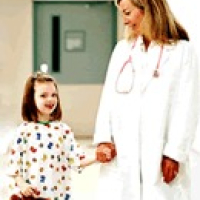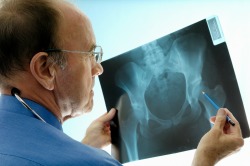
 World Kidney Day 2016 focuses on kidney disease in children, which can range from temporary disorders to life-threatening conditions. Medical researchers continue to produce new studies to help identify and treat childhood kidney disease, but the results can often be overwhelming and contradictory. Cochrane Kidney and Transplant (CKT) undertakes systematic reviews of studies based on randomised controlled trials (RCTs), the “gold standard’” for medical research, in order to summarise and evaluate all the evidence on a particular topic and provide reliable findings that can inform families, health professionals, policy makers and the general public. In this article for World Kidney Day, paediatric nephrologist and CKT editor Elisabeth Hodson showcases some of the ways in which CKT paediatric reviews have changed medical practice, informed policy and stimulated new research.
World Kidney Day 2016 focuses on kidney disease in children, which can range from temporary disorders to life-threatening conditions. Medical researchers continue to produce new studies to help identify and treat childhood kidney disease, but the results can often be overwhelming and contradictory. Cochrane Kidney and Transplant (CKT) undertakes systematic reviews of studies based on randomised controlled trials (RCTs), the “gold standard’” for medical research, in order to summarise and evaluate all the evidence on a particular topic and provide reliable findings that can inform families, health professionals, policy makers and the general public. In this article for World Kidney Day, paediatric nephrologist and CKT editor Elisabeth Hodson showcases some of the ways in which CKT paediatric reviews have changed medical practice, informed policy and stimulated new research.
THE most common kidney problem in children is urinary tract infection (UTI) and CKT systematic reviews have shown that this condition can be effectively treated with reduced hospitalisation and medication. UTIs, when they are associated with high fever (acute pyelonephritis), make children extremely unwell. Traditionally acute pyelonephritis has been treated with intravenous antibiotics for 7 – 14 days, requiring extended stays in hospital. A CKT review showed that intravenous antibiotics given for 3 – 4 days followed by oral antibiotics were just as effective in treating UTI and preventing kidney damage. The review also showed oral antibiotics alone were as effective in treating UTI as the 3 – 4 day intravenous antibiotic followed by oral antibiotic regimen. These results mean that most children with acute pyelonephritis can now be treated successfully with oral antibiotics outside hospital. Many children have UTI without high fever but with distressing symptoms including pain on passing urine. Usually such children are treated with oral antibiotics for 7 – 10 days. Two CKT reviews investigated whether a single dose or 2 – 4 days of antibiotics could be used instead. The reviews found that while single-dose treatment was less effective than 10 days of treatment, children could be effectively treated with 2 – 4 days of antibiotics instead of longer courses.
 Often UTIs are associated with vesicoureteric reflux (VUR), where urine from the bladder refluxes back up to the kidneys. For many years paediatricians recommended that following a UTI, if VUR was present, children should be placed on long-term antibiotics and/or undergo surgical correction of VUR to prevent further UTI and kidney damage. A CKT review, which evaluated correction of VUR by open or endoscopic surgery, found no significant benefit of surgery compared with long-term antibiotics in the prevention of UTI and kidney damage. Another CKT review showed a small reduction in the risk of UTI with low-dose, long-term antibiotics compared with a placebo or no treatment, but this was balanced against the increased risk of developing organisms resistant to the antibiotic. As a result of these findings, clinicians no longer routinely consider surgery or long-term antibiotics for children with VUR and UTIs but consider the need for such treatments on a case-by-case basis.
Often UTIs are associated with vesicoureteric reflux (VUR), where urine from the bladder refluxes back up to the kidneys. For many years paediatricians recommended that following a UTI, if VUR was present, children should be placed on long-term antibiotics and/or undergo surgical correction of VUR to prevent further UTI and kidney damage. A CKT review, which evaluated correction of VUR by open or endoscopic surgery, found no significant benefit of surgery compared with long-term antibiotics in the prevention of UTI and kidney damage. Another CKT review showed a small reduction in the risk of UTI with low-dose, long-term antibiotics compared with a placebo or no treatment, but this was balanced against the increased risk of developing organisms resistant to the antibiotic. As a result of these findings, clinicians no longer routinely consider surgery or long-term antibiotics for children with VUR and UTIs but consider the need for such treatments on a case-by-case basis.
Nephrotic syndrome is a kidney condition where the filtering units in the kidney leak protein into the urine. In over 80% of cases in children, nephrotic syndrome is “steroid-sensitive” and responds to corticosteroid therapy. But before the majority of children with this condition “grow out” of their disease in adolescence or early adult life, about 80% will have one or more relapses. This puts them at risk of the side-effects of long-term corticosteroid use, such as reduced growth, osteoporosis, high blood pressure and psychological disturbances. An early CKT review evaluating the available research on different durations of corticosteroid treatments in children with steroid-sensitive nephrotic syndrome found that corticosteroids given for up to six months reduced the risk of relapse. This finding prompted several teams of researchers to challenge the previous results and undertake more rigorous studies. A recent update of the original CKT review incorporated the new research and showed that two to three months of corticosteroid treatment was just as effective as the previous six-month regimen. Children often suffer a relapse of nephrotic syndrome when they develop an upper respiratory tract infection. A CKT review found that administering daily corticosteroids for 5 – 7 days at the onset of the infection reduced the risk of relapse compared with alternate-day or no corticosteroids.
 CKT reviews have also examined alternatives to corticosteroid treatment for nephrotic syndrome in children. One review found that cyclophosphamide, levamisole, mycophenolate mofetil, cyclosporin, tacrolimus and rituximab reduce the frequency of relapse in steroid-sensitive disease but to date no agent has been identified which prevents further relapses completely. A few children develop steroid-resistant nephrotic syndrome, which fails to respond to corticosteroids altogether, and these children progress to complete kidney failure if they do not respond to other therapies. A CKT review evaluated the few RCTs which have tested different therapies in such children. Cyclosporin and tacrolimus increase the likelihood of achieving remission compared with cyclophosphamide, a placebo or no treatment, however the number of children responding to any treatment regimen is low. These findings highlight the need for further research into new treatments for childhood nephrotic syndrome.
CKT reviews have also examined alternatives to corticosteroid treatment for nephrotic syndrome in children. One review found that cyclophosphamide, levamisole, mycophenolate mofetil, cyclosporin, tacrolimus and rituximab reduce the frequency of relapse in steroid-sensitive disease but to date no agent has been identified which prevents further relapses completely. A few children develop steroid-resistant nephrotic syndrome, which fails to respond to corticosteroids altogether, and these children progress to complete kidney failure if they do not respond to other therapies. A CKT review evaluated the few RCTs which have tested different therapies in such children. Cyclosporin and tacrolimus increase the likelihood of achieving remission compared with cyclophosphamide, a placebo or no treatment, however the number of children responding to any treatment regimen is low. These findings highlight the need for further research into new treatments for childhood nephrotic syndrome.
CKT has also demonstrated the need for more research into Henoch-Schönlein purpura (HSP), in which the inflammation of small blood vessels leads to skin bruises (purpura), abdominal pain, arthritis and kidney involvement. In most children any kidney issues resolve within 6 – 12 months of the onset of the disease but in a few children kidney damage may lead to kidney failure and the need for dialysis and transplant. A CKT review identified that the prevailing treatment of corticosteroids given for 14 – 28 days at the presentation of the HSP illness did not prevent the development of persistent kidney disease. It also found few data from RCTs on the treatment for established kidney disease in HSP, although no significant benefit of cyclophosphamide was demonstrated.
 Children with chronic kidney disease (CKD) and reduced overall kidney function develop abnormalities of calcium and phosphorus metabolism, which can lead to changes in bone structure, bone deformities and growth retardation as well as blood vessel calcification. A CKT review found that bone disease, as assessed by changes in parathyroid hormone levels, improved with calcitriol and similar vitamin D preparations, however none of the studies considered important outcomes such as growth, bone pain and bone deformities. Children with CKD and deteriorating kidney function may grow poorly but growth may improve with daily injections of recombinant human growth hormone (rhGH). A CKT review found that rhGH increased the rate of growth in children with CKD so that children grew an additional 4 cm after one year of treatment compared with children not on rhGH, although the RCTs could not be continued for long enough to determine if adult height was increased.
Children with chronic kidney disease (CKD) and reduced overall kidney function develop abnormalities of calcium and phosphorus metabolism, which can lead to changes in bone structure, bone deformities and growth retardation as well as blood vessel calcification. A CKT review found that bone disease, as assessed by changes in parathyroid hormone levels, improved with calcitriol and similar vitamin D preparations, however none of the studies considered important outcomes such as growth, bone pain and bone deformities. Children with CKD and deteriorating kidney function may grow poorly but growth may improve with daily injections of recombinant human growth hormone (rhGH). A CKT review found that rhGH increased the rate of growth in children with CKD so that children grew an additional 4 cm after one year of treatment compared with children not on rhGH, although the RCTs could not be continued for long enough to determine if adult height was increased.
Finally, while RCT-based research is frequently carried out to investigate therapies for children with UTI or nephrotic syndrome, there are few RCTs in children which examine therapies in serious kidney diseases such as systemic lupus erythematosus or IgA nephropathy or investigate different interventions in haemodialysis or peritoneal dialysis or kidney transplants. Small numbers of children, especially those over 12 years of age, are sometimes included in adult studies of these diseases and in these cases paediatric RCTs and RCTs including children have been included in CKT reviews together with adult studies. While it is important that these data are included in the reviews, the small amount of data from paediatric studies may be swamped by the much larger amount of data from adult studies, obscuring possible differences between the efficacy and safety of interventions for adults compared to children. More research focused on the effect of treatments on children would allow CKT to produce more paediatric-focused systematic reviews to help improve the lives of children with kidney disease.
